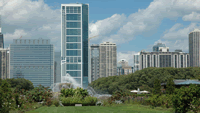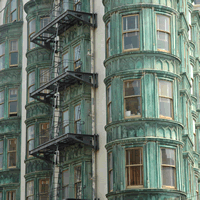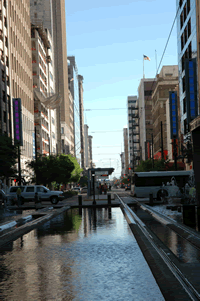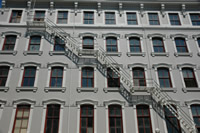“Safety First”…is one of those phrases we hear quite often…especially if you have kids or loved ones. When it comes to where we live, no matter what type of affordable housing we live in there resides the possibility of the silent killer…Carbon Monoxide. HUD has created a division called Healthy Homes Program to combat this type of life threatening hazard. The Healthy Homes Initiative (HHI) departs from the more traditional approach of attempting to correct just one hazard at a time (e.g., asbestos, radon). In April 1999, HUD submitted to Congress a preliminary plan containing a full description of the Initiative.
The HHI builds upon HUD’s existing affordable housing-related health and safety issues, including lead hazard control, building structural safety, electrical safety and fire protection to address multiple childhood diseases and injuries, such as asthma, mold-induced illness, carbon monoxide poisoning, and other conditions related to housing in a more organized fashion. A coordinated effort is feasible because a limited number of building deficiencies contribute to many hazards. Substantial savings are possible using this method since separate visits to a home by an inspector, public health nurse, or outreach worker can add significant costs to efforts to eliminate hazards. A description of the HHI program, and a link to the Healthy Homes website, are available at www.hud.gov.
Carbon monoxide (CO), which is a poisonous gas, cannot be seen, smelled or tasted, and can be fatal when high levels are breathed. Poisoning occurs when fuel-burning machinery is used indoors (i.e., generators without proper ventilation).
- Car exhaust fumes entering the house from the garage.
- Combustion equipment such as furnaces or water heaters not working properly or that have a blocked exhaust system.
Symptoms of carbon monoxide poisoning are similar to those of the flu and allergies. Carbon monoxide poisoning, which affects infants, people with lung or heart disease or people with asthma more seriously, also may be misdiagnosed as migraine headache, stroke, food poisoning or heart disease. More than 500 people in the United States die as a result of carbon monoxide poisoning each year.
Installing Carbon Monoxide Detectors is the best way to protect yourself and your tenants from Carbon Monoxide poisoning. HUD is already beginning to mandate these life-saving detectors be installed in all dwelling units, especially rentals, that have (i) a fossil fuel-burning heater, appliance or fireplace (for example, a gas stove or water heater) or (ii) an attached garage, need to be aware of a new laws being passed in 2011 regarding carbon monoxide devices. California is one state so far which has newly-enacted regulations of the Health & Safety Code (part of Senate Bill No. 183); where owners of all such properties must install carbon monoxide alarms by the following deadlines:
- July 1, 2011: for single-family dwellings
- January 1, 2013: for all other dwellings.
(The deadlines are subject to extension for up to 6 months if the State decides that more time is necessary to make approved alarms available. If such postponement is made, the Department of Housing and Community Development must post a public notice on its website).
REAC inspections will include these carbon monoxide detectors on their list of inspectable items. I am now waiting on a response from the REAC helpdesk as to the status of these new regulations and will keep you posted. These carbon monoxide detectors may be costly if purchased one at a time. Buying in bulk may be your best bet. In addition some of these detectors may need to be replaced every 7 years. To satisfy the requirements of the new law, alarms must be approved by the State Fire Marshal and installed on every floor. The State Fire Marshal’s web site maintains a listing of carbon monoxide alarms and detectors. https://sf-fire.org/smoke-and-carbon-monoxide-alarms-home-and-rental-units
It appears as though the alarms and devices on this listing meet the requirements of the new law, but this should be confirmed by owners. The new law imposes a $200 maximum fine on owners for each violation of the installation requirements, provided that a 30-day notice is provided to cure the violation. Perhaps more important, however, may be the implication or presumption of negligence created by a violation of the new law in any case where persons or property are injured or damaged as a result of a carbon monoxide leak.
Health & Safety Code section 17926.1 covers requirements specific to rental units, including the owner’s (or owner’s agents) maintenance requirements. Also covered are permission-to-enter and device-failure notification requirements imposed on tenants. With the law now clear on the required presence and maintenance of carbon monoxide alarms in qualifying rentals, it is critical for any multifamily owner of affordable housing to meet all applicable requirements of this new law once it is enacted.
Initial and annual inspections beginning with single family homes on July 1, 2011 should be aware that single family residences that lack an operable carbon monoxide alarm will be considered an HQS fail beginning July 1 2011.
What can you do?
Carbon monoxide poisoning is preventable. The following tips and pointers can help keep your family safe:
- Never run your car in a closed garage.
- Make sure fuel burning appliances are installed by a professional and that they are working properly.
- Choose vented appliances when possible.
- Never use a gas range or oven to heat your home.
- Have your heating system and chimneys inspected each year.
- During winter months check frequently that vents, flues and chimneys are not blocked by snow or ice.
- Replace dirty air filters on heating and cooling systems.
- Never run a generator, power washer, or any diesel or gasoline-powered engine inside a basement, garage or other enclosed structure.
- Keep your home well ventilated; install ventilation for indoor combustion appliances and consider installing air exchanges or air conditioning if your home is tightly sealed.
- Never use a charcoal grill, hibachi, or camping lantern or portable stove inside your home, tent or camper.
- Install carbon monoxide detectors near bedrooms.
- Talk to your doctor or local health department if you suspect that you, or a family member, might be suffering from carbon monoxide fumes.
Call your local building or code enforcement agency if you have concerns about the combustion appliances in your home.







Leave a Reply
You must be logged in to post a comment.